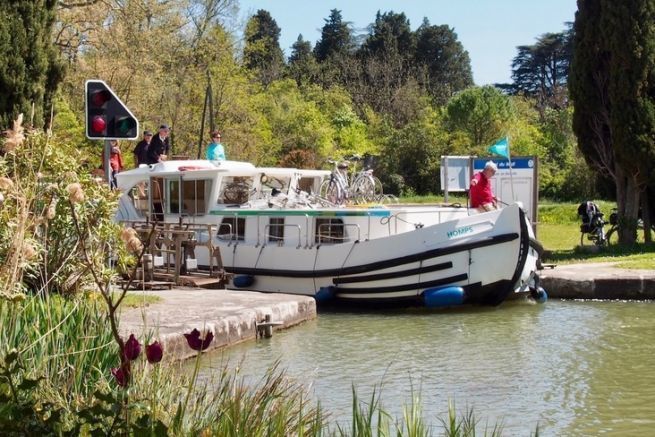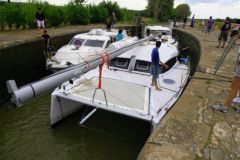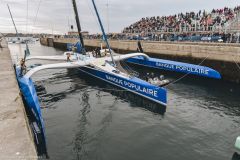Many waterways still have their locks operated by humans, while others have chosen to replace the agents with automated systems. It is a pity for the human contact but it works very well, as long as the boater knows how to interact with the system. The user must be able to indicate his or her intentions to the system and read the indications given to him or her on the progress of the maneuver so that it runs smoothly.
Announce yourself at the locks
When you discover a new waterway, you must also become familiar with its locking system. There are several control systems to announce to the automatic system your intention to pass through the structure:
- Bollard on the bank
Sometimes, it is necessary to disembark a crew member who will press the button of a control terminal on the quay. To avoid the risk of vandalism, these terminals are sometimes equipped with keys that are given to you by the rental companies or at the first lock. Simply press the "up" or "down" button to prepare the lock and open the doors.
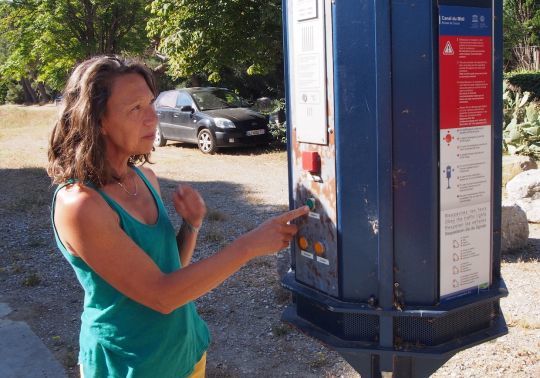
- The pole
Some automatic systems allow you to announce yourself from the boat. Here a pole, often a flexible pipe of large section, is suspended from a cable above the access channel to the lock. When passing underneath, a crew member grabs it and gives it a quarter turn.
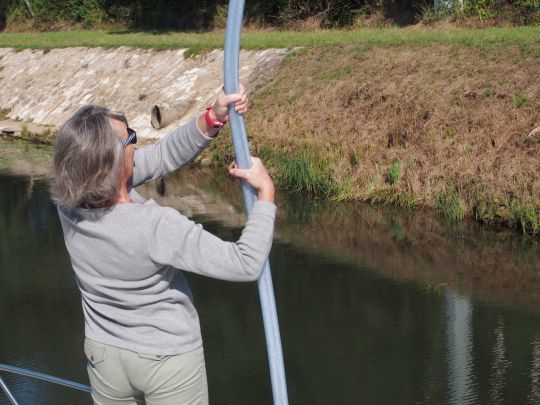
- The remote control
The boater is given a remote control box at the first lock. When approaching the lock, he must point the box at the detection terminal placed on the towpath. A flashing light confirms that the command has been taken into account.
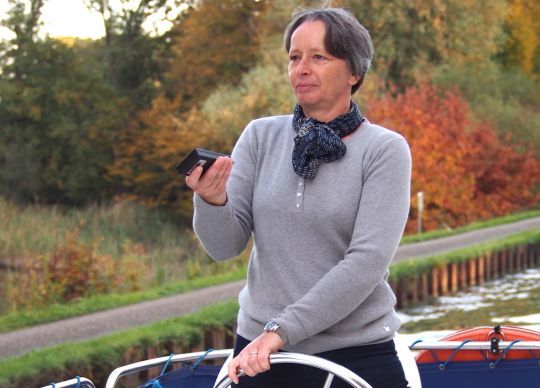
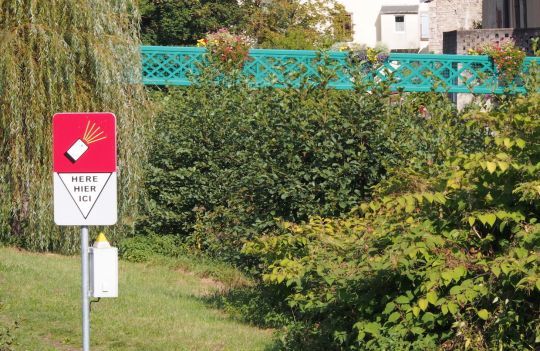
- The geo-localized remote control
Some units are geotagged and detect which lock you are near. It takes a moment for the GPS to initialize and you should turn the unit on a minute or two before you need to use it.
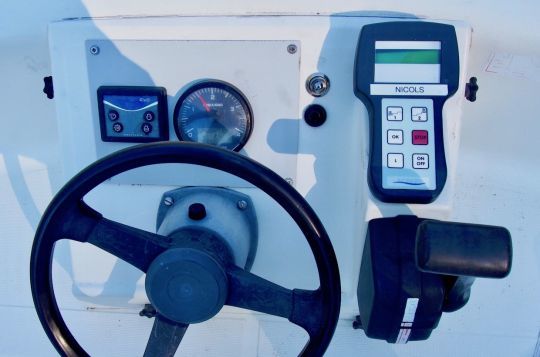
- Lock chains
Some locks work in a chain, which means that when you leave one, you automatically start the preparation of the next one. The constraint is to inform the control post by phone if you have to stop, and then when you will resume your route.
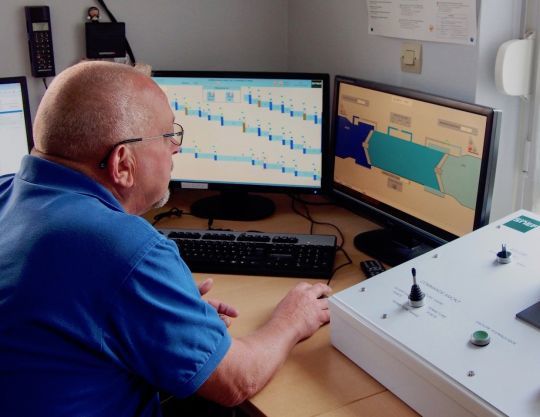
Indicator lights
All these systems have in common that they operate with two-colored lights that validate the request and confirm that the lane is free.

Detection at the entrance
When the boat passes through the gates, a sensor confirms the entry of the boat(s) into the lock chamber. If there are several boats passing through the lock, enter without haste so that the automatic system can detect each of them.
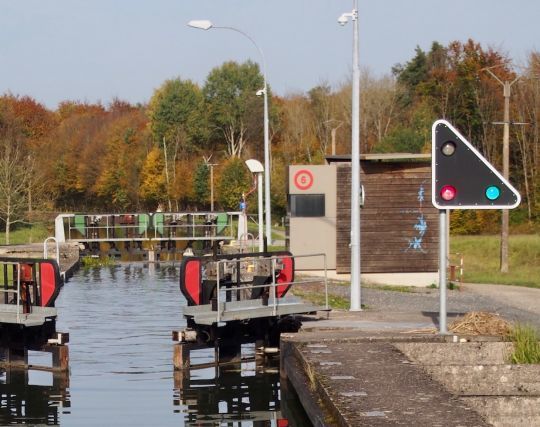
Control poles
When each boat has passed its moorings, the manoeuvre itself is launched by a system of two poles placed along the bajoyer in the center of the basin. By raising the blue one, the basin is started, by lowering the red one, it is interrupted in case of danger. A bell announces the closing of the doors and then the valves open. The system is set to be progressive and the gates are first raised halfway to avoid excessive turbulence. When the level is established, the buzzer sounds again and the gates open.
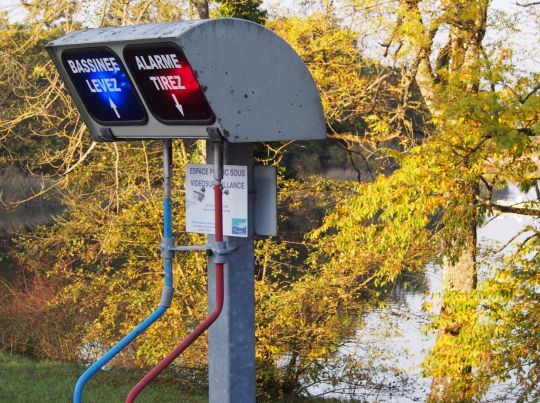
A sensor counts the outgoing
The boats exit and again pass a detector that makes sure that all the boats that have entered leave. This prevents the doors from closing on a latecomer. If a boat is waiting in the opposite direction, it must never take advantage of the open doors to sneak out! It must follow the complete procedure, be detected and wait for the light to invite it to enter.
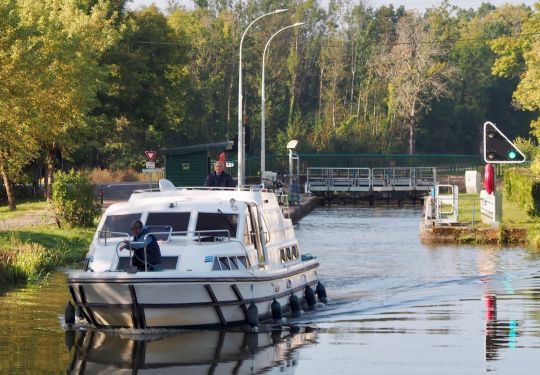
These systems work very well, as long as each boater is patient and attentive enough. If the automatic system detects a danger, it closes the gates and goes to safety until a human intervention allows it to start again. Each automatic lock is equipped with an intercom that allows an agent to be reached. The agent can restart the cycle from his control station if you confirm the absence of danger or move to another location if necessary.
